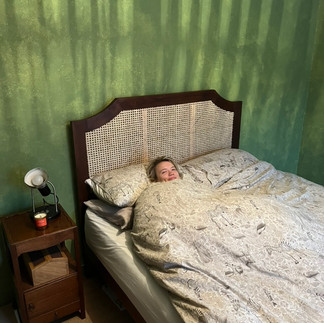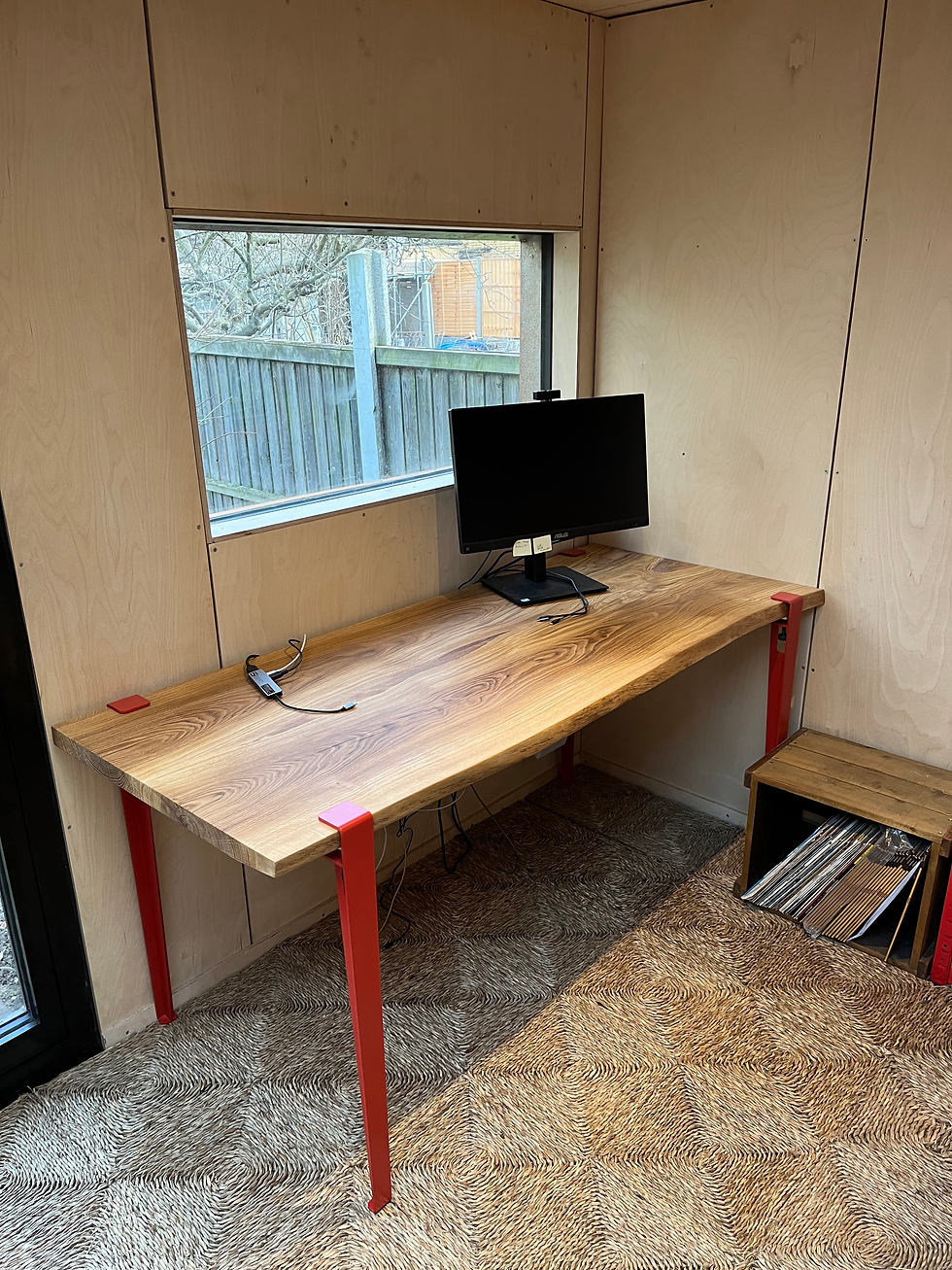Milling wood with a mobile sawmill for the ultimate in bespoke furniture
- Theo Silkstone

- Sep 9
- 5 min read
Updated: Sep 12
My journey into furniture making began with a storm-damaged oak tree. This giant oak had stood for centuries, lining the lane to my family’s farm. My father and grandfather had walked beneath its branches, as had countless others before. When it finally came down, I couldn’t bear to see it go to waste.

I bought an Alaskan sawmill – a type of portable sawmill that attaches to a chainsaw – and set to work cutting it into planks. The first moment of peeling back a fresh board to reveal its grain was unforgettable. The logs were heavy, the work relentless, but the reward was magical. Storm Eunice brought down more trees and kept me milling for weeks, often in snow and rain, cutting and hauling 300kg planks on my own.

That barn full of timber changed my life. I left my career as a patent attorney, trained with a cabinetmaker, and began my path as a bespoke furniture maker. Years later, the timber I milled has gone on to become special projects: a pair of bespoke office desks for my brother, shelves and pieces for my own home, and most significantly, my own marriage bed built in olive ash – a nod to Odysseus who carved his from an olive tree. Each piece carries the memory of that fallen oak and the story of my journey into craft.

Today, I offer the same experience to others. My mobile sawmill service allows me to mill your wind-felled trees where they lie. Large machinery often can’t reach such places, but a portable saw mill can turn otherwise inaccessible logs into usable timber. Once milled and stacked to season, that timber can be transformed into meaningful furniture: a bespoke desk for a home office, a solid oak desk, a record player stand, or other custom wood furniture that preserves both memory and material.
What I offer is more than just milling – it’s the chance to keep the story of your tree alive. Furniture made from your own timber becomes more than functional; it becomes personal. A home office desk made from your own oak, or a dining table from a tree that once stood in your garden, carries an emotional connection that shop-bought furniture never could. Although I am based in Oxford I have milled trees for clients as far away as Bridport, so if you have had a tree come down in a storm or you know that you are going to have to take a tree down, wherever you are, then please do get in touch and I would love to discuss this further with you.
Planking with a mobile sawmill and the seasoning process
These planks are extremely wet and heavy when first cut. For instance, a single cubic foot of green oak can contain 16 litres of water and this must be reduced to at least 2.5 litres before the timber is ready for use. Accordingly, before use the timber must first be seasoned to bring down the moisture content of the wood. Immediately after felling the vessels in the timber will start to dry. This process is very slow in whole logs, but can be speeded up by converting the log into plank form, when the water-level will fall steadily until a fibre saturation point is reached (usually 30 per cent moisture content). From then on the water loss slows until the board has reached an equilibrium with the surrounding atmosphere.
My role in milling is only the first step - the important part is what happens afterwards. Once cut, the planks need to be stacked properly to allow the timber to season without spoiling. I do this by raising them off the ground on solid bearers, with evenly spaced “stickers” between each layer to let air flow freely across every surface. A simple roof or cover protects the stack from driving rain and strong sun. The aim is not to rush the drying but to let it happen gently, minimising splits, warping and distortion.

As a rule of thumb, hardwoods such as oak and ash take about a year per inch of thickness to reach a workable condition. So a two-inch board might need two years of air drying, sometimes longer depending on the weather. I have always found that extra time is worth it: the timber becomes more evenly balanced in its moisture content and less likely to move once worked. Older craftsmen would sometimes season oak for a decade or more, not because it became drier but because it became more stable, more mature, and ultimately kinder to use.
While most of the drying process takes place naturally in carefully stacked piles, I also make use of dehumidifiers in my workshop for the final stages. These provide a level of control that traditional air-drying alone can’t guarantee, especially in the damp and unpredictable British climate. By moving timber into a controlled space once it has air-dried to a certain point, I can gently bring the boards down to the equilibrium moisture levels needed for fine furniture making.

Unlike large commercial kilns, which can be aggressive and risk damaging the wood, dehumidifiers work more slowly and evenly. This kinder approach means fewer stresses within the timber, less distortion, and a more stable material once it is ready to work. It is a method well suited to small-scale furniture makers who want the benefits of kiln drying but without compromising the integrity of the wood.
For me, using dehumidifiers is part of striving for the highest quality. It ensures that when I turn your tree into a bespoke desk, an oak dining table, or another piece of home office furniture, the timber is as stable and reliable as it can possibly be. Combined with careful air drying, this gives the best of both worlds - tradition, patience, and modern precision.
For clients, this process means a degree of patience is required - but that patience is always rewarded. It can be great fun working on designs during that time in collaboration with the client and their needs. When that furniture finally takes shape it is certainly worth the wait, as it will hold memories for both generations past and future.
Where clients don’t have space to season the timber themselves, I can advise on storage or in some cases help manage the drying process. What matters is that the boards are given the best possible chance to season successfully, so that when the time comes to design your piece, the wood is ready to shine.
If you have a fallen tree that means something to you, I’d be glad to help. From cutting with a mobile saw mill to designing and building lasting, personal bespoke furniture, my aim is to turn your timber into a story that lives on. Get in touch to discuss how we can preserve your tree and transform it into something truly special.
References I used when originally studying the seasoning process and use of portable sawmills:
Desch, H.E. and Dinwoodie, J.M. (1996) Timber: Its Structure, Properties and Utilisation. 6th edn. Basingstoke: Macmillan.
Joyce, E. (1987) The Technique of Furniture Making. 4th edn. London: Batsford.










Comments